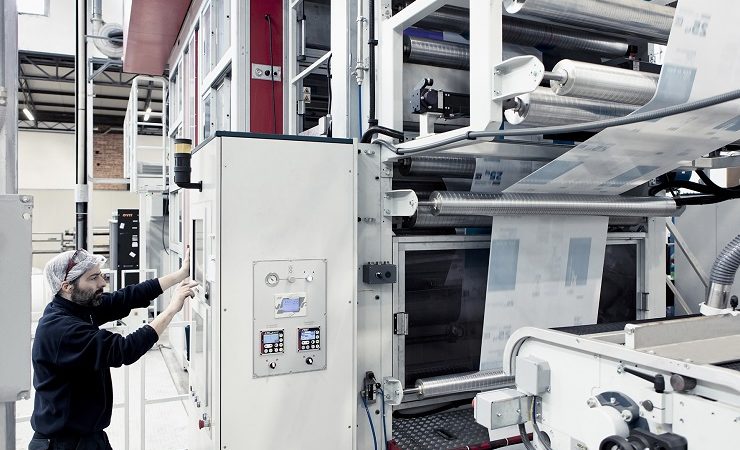Flexible packaging provider Selene has improved the sustainability of its production process with the installation of a BTF Flexo’s GTX-MM inking and washing system, and Gama G29 viscometers.
The installation was carried out by the I&C-GAMA and BFT Flexo team which fitted the new parts onto a flexo printing press in line with an extruder.
The system controls inking, viscosity, ink temperature and final washing, allowing the inking process to be fully automated, limiting downtime, between work changes, limiting waste and significantly reducing solvent consumption. With the original system of the machine, this process first required long downtimes between changes of work, with a considerable waste of solvent for cleaning.
Selene’s inking and washing system is now equipped with two pneumatic that can ink, recover and wash at varying speeds. ‘The main innovation lies at the hearth of the system, a stainless steel collector with integrated valves and sensors that can manage and monitor every cycle,’ said Simone Bonaria, COO of BFT Flexo. ‘The system alerts the operator of any ink-related problems and, thanks to the data provided by the G29, the flow of ink is constantly monitored together with the correct ink viscosity and temperature.’
The integration with the Gama viscometers, mounted on board of the BFT Flexo trolley, has further raised the technological level of the installation, ensuring Selene a total control of the inking process. ‘Our two companies have worked side by side to develop a solution that can meet the need for printers to keep costs low, even in the presence of rapid job changes, with new colours or any other types of inks,’ added Sante Conselvan, general manager of I&C-GAMA. ‘The combination of our systems — the G29 and the GTX-MM — not only leads to an optimisation of production, but it also allows significant savings in the printing process.’
At the same time, the training course was carried out for the press operators, who were able to see the high level of automation. In addition to the control, the system is able to completely empty the circuit of ink in circulation before washing it completely, including rubber rollers and anilox. The operation is done automatically without the use of an operator and using a minimum amount of solvent, calculated in a fifth of the quantity used with the original system. ‘The figure for the lowest solvent consumption is very relevant, and it confirmed the ROI, previously calculated for the customer when evaluating the project,’ confirmed Simone Bonaria.
A few weeks after installation, the company could clearly see tangible benefits to the installation. ‘We are fully satisfied with the results achieved,’ said Alessandra Canese, purchasing manager at Selene. ‘In addition to making faster set up print changes, we have a lower solvent consumption for washing, so much that we plan to extend the application of the system to other lines not initially involved. The project we are sketching is to have a unique control hub that can manage and monitor the washing systems that will be installed on other production lines’.


